News
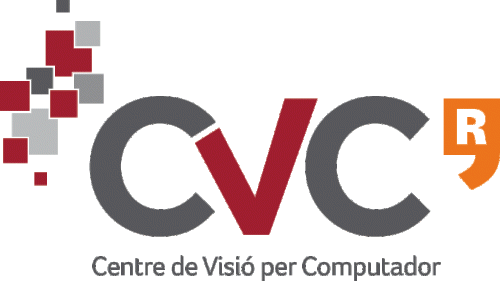
30/04/2015
The Library Living Lab opens its doors
Open on last April 25, the Library Living Lab (L3) is a unique services and technology solutions laboratory located in the Miquel Batllori library, Sant Cugat, closed to the Barcelona Synchrotron Park (BSP). L3 aims at exploring the technology applications of new ways of interacting with books, with the entire contain of a library and with culture in general.
To be meaningful, L3 has to be a dynamic and collaborative project in which citizens work together with the Computer Vision Center (CVC) researchers from the UAB university, a key BSP partner, and public institutions.
L3 starts working on 3 initial projects. The first one is devoted to the access to digital collections offering added value to the documents. The second one deals with the search for new interaction forms between users and machines based on the use of augmented reality and real objects. The third one focuses on the use of the 3D printer installed in the library.
In addition to these 3 initial lines of research, users are invited to suggest new research and working programmes.
News based on the press release issued by CVC (in Spanish and Catalan).
The Library Living Lab opens its doors
Open on last April 25, the Library Living Lab (L3) is a unique services and technology solutions laboratory located in the Miquel Batllori library, Sant Cugat, closed to the Barcelona Synchrotron Park (BSP). L3 aims at exploring the technology applications of new ways of interacting with books, with the entire contain of a library and with culture in general.
To be meaningful, L3 has to be a dynamic and collaborative project in which citizens work together with the Computer Vision Center (CVC) researchers from the UAB university, a key BSP partner, and public institutions.
L3 starts working on 3 initial projects. The first one is devoted to the access to digital collections offering added value to the documents. The second one deals with the search for new interaction forms between users and machines based on the use of augmented reality and real objects. The third one focuses on the use of the 3D printer installed in the library.
In addition to these 3 initial lines of research, users are invited to suggest new research and working programmes.
News based on the press release issued by CVC (in Spanish and Catalan).
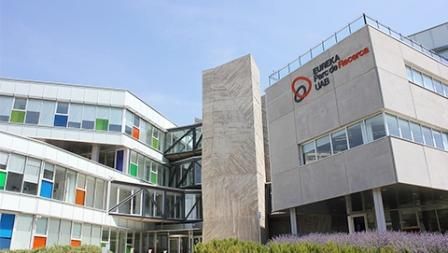
23/04/2015
8 million Euros turnover for the Start-ups settled in the PRUAB
8 million Euros turnover for the Start-ups settled in the PRUAB
The UAB research park (PRUAB), which the Barcelona Synchrotron Park works with, hosted in 2014 22 start-up companies in its iconic Eureka building, most of them created from research projects carried out at the UAB university. These companies reached together last year 8 million Euros turnover, 1 million more than in 2013.
Half these companies got 1.6 million Euros external support from different private companies and state grants and loans. The major incentives were the Torres Quevado grants and the state Retos-Colaboración loans, which are both managed by the PRUAB.
The number of new start-up companies created last year is similar to that of previous years with 7 new creations: AEInnova, Crowdmobile, Futurecrome, Applied Nanoparticles, Pure Inspiration, Pragmatic Diagnostics and Devicare.
News based on the press release issued by the PRUAB (in Spanish)
Image: Eureka building, PRUAB
Half these companies got 1.6 million Euros external support from different private companies and state grants and loans. The major incentives were the Torres Quevado grants and the state Retos-Colaboración loans, which are both managed by the PRUAB.
The number of new start-up companies created last year is similar to that of previous years with 7 new creations: AEInnova, Crowdmobile, Futurecrome, Applied Nanoparticles, Pure Inspiration, Pragmatic Diagnostics and Devicare.
News based on the press release issued by the PRUAB (in Spanish)
Image: Eureka building, PRUAB

16/04/2015
The BSP opens its new head office
The BSP opens its new head office
To date, the Barcelona Synchrotron Park (BSP) administration was in temporary offices in downtown Cerdanyola. As main urbanization works have been completed in the BSP business area and as first companies are now operative (ALBA synchrotron, SENER, IBM, CaixaBank, T-Systems), the BSP administration moved on last March 20 to the park itself into the SENER building.
This change corresponds to the new dynamics the BSP wants to impulse with:
A promotional video on BSP is being carried out and will be presented by summer.
Image: SENER
This change corresponds to the new dynamics the BSP wants to impulse with:
- A new Urbanization Master Plan (PDU) that allows, among other things, offering plots that best suit companies requirements.
- The new Barcelona Synchrotron Park name, a name more transparent than the original one (Parc de l’Alba) that takes advantage of the power of the Barcelona brand and of the iconic synchrotron, thus giving international visibility to the park.
- Generation of new synergies between the PRUAB (the Research Park of the Universitat Autònoma de Barcelona), the PTV (the Vallès Technology Park) and the BSP: these 3 parks belong to the same territory and cover together the whole chain value that transforms basic research into economic wealth via technology transfers, incubation of new companies, consolidated companies housing, etc.
A promotional video on BSP is being carried out and will be presented by summer.
Image: SENER
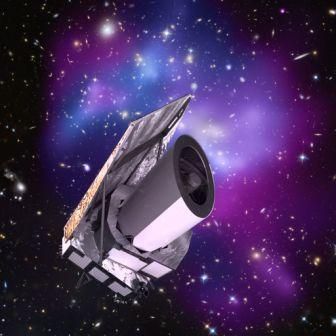
09/04/2015
Three important projects awarded to SENER
Three important projects awarded to SENER
The international engineering and technology group SENER whose Barcelona offices are located in the Barcelona Synchrotron Park, has been recently awarded three important projects.
The joint venture of SENER and AFCONS has recently signed an EPC contract with H-Energy Gateway Private limited (HEGPL), a Hiranandani Group Company, for turnkey engineering, procurement and construction (EPC) of its LNG storage and re-gasification project in Jaigad, Maharashtra. The capacity of the plant is 8 million tons per annum and facility construction is set to commence from mid this year.
The engineering and technology group SENER has also been awarded the contract for the Attitude and Orbit Control System (AOCS/GNC) on the space probe Euclid. This award makes SENER the prime contractor for this AOCS subsystem that requires the highest level of performance, and for a European Space Agency (ESA) mission of utmost scientific importance providing further confirmation of the company’s leading position in highly complex AOCS/GNC systems for the science-technology market.
Finally, SENER and ACCIONA together form the consortium chosen to develop the turnkey project of the Kathu solar thermal plant, South Africa. This complex is led by GDF SUEZ with South African partners with a forecast investment of more than EUR 500 million. It is a 100 MW plant with parabolic troughs designed and patented by SENER and a thermal energy storage capacity of 4.5 hours, thanks to the use of molten salts. The plant will begin operations in 2018 and will be able to supply electricity to 80,000 homes.
News based on the press releases issued by SENER:
Image: Euclid Consortium
The joint venture of SENER and AFCONS has recently signed an EPC contract with H-Energy Gateway Private limited (HEGPL), a Hiranandani Group Company, for turnkey engineering, procurement and construction (EPC) of its LNG storage and re-gasification project in Jaigad, Maharashtra. The capacity of the plant is 8 million tons per annum and facility construction is set to commence from mid this year.
The engineering and technology group SENER has also been awarded the contract for the Attitude and Orbit Control System (AOCS/GNC) on the space probe Euclid. This award makes SENER the prime contractor for this AOCS subsystem that requires the highest level of performance, and for a European Space Agency (ESA) mission of utmost scientific importance providing further confirmation of the company’s leading position in highly complex AOCS/GNC systems for the science-technology market.
Finally, SENER and ACCIONA together form the consortium chosen to develop the turnkey project of the Kathu solar thermal plant, South Africa. This complex is led by GDF SUEZ with South African partners with a forecast investment of more than EUR 500 million. It is a 100 MW plant with parabolic troughs designed and patented by SENER and a thermal energy storage capacity of 4.5 hours, thanks to the use of molten salts. The plant will begin operations in 2018 and will be able to supply electricity to 80,000 homes.
News based on the press releases issued by SENER:
- Engineering, procurement and construction of LNG storage and re-gasification project
- Euclid project
- Solar termal plant project
Image: Euclid Consortium
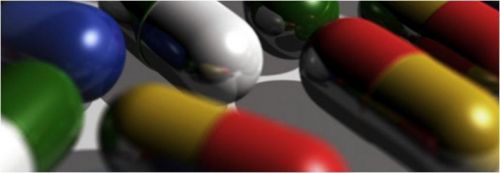
25/03/2015
ALBA synchrotron supports the pharmaceutical industry
ALBA synchrotron supports the pharmaceutical industry
Once again this year, the ALBA synchrotron organizes a workshop for companies. This time the aim is to welcome companies from the pharmaceutical industry in order to explain the applications the ALBA synchrotron can offer in this sector.
This workshop will take place on May 7 from 9 a.m. to 5 p.m.
The agenda includes:
Attending this workshop is free but registration is mandatory before May 4 (see workshop web page).
This workshop will take place on May 7 from 9 a.m. to 5 p.m.
The agenda includes:
- Different presentations on the analytical performances ALBA offers in this field: powder diffraction, absorption, non-crystalline diffraction, X-ray microscopy and macromolecules crystallography.
- Different cases studies from pharmaceutical companies that used ALBA.
- Visit to the facilities.
- Networking session between companies and scientists.
Attending this workshop is free but registration is mandatory before May 4 (see workshop web page).
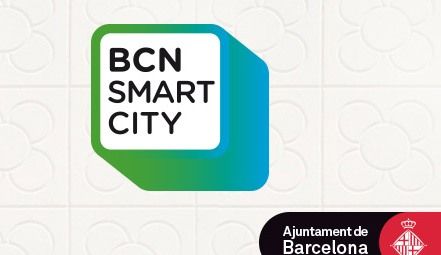
20/03/2015
Barcelona named top smart city in the world
Barcelona named top smart city in the world
According to Juniper Research that recently compiled its list of top-five smart cities, Barcelona ranks first ahead of New York, London, Nice and Singapore.
In an interview with Forbes published on March 9, the author of the study, Steffen Sorrell, focuses on two overarching benefits of smart cities: sustainability and efficiency. To that end, he identified five essential components of a smart city: technologies, buildings, utilities, transportation and road infrastructure and the smart city itself.
Barcelona wasn’t actually top of the class across any of the metrics: Masdar City in the United Arab Emirates won out where environment and sustainability were assessed for example, while Singapore’s smart traffic system is second to none. However, the breadth of Barcelona’s involvement in the smart city concept, and consistent above-average performance across all metrics judged lead it to the top step.
The report on smart cities forecasts for smart city involvement in the smart grid, smart traffic and parking as well as smart street lighting, so naturally those were assessed in terms of cities’ involvement. Several other metrics were judged, including cities’ agency cohesion, citizen engagement, technological capability and use of open data among others.
News based on the interview published by Forbes
In an interview with Forbes published on March 9, the author of the study, Steffen Sorrell, focuses on two overarching benefits of smart cities: sustainability and efficiency. To that end, he identified five essential components of a smart city: technologies, buildings, utilities, transportation and road infrastructure and the smart city itself.
Barcelona wasn’t actually top of the class across any of the metrics: Masdar City in the United Arab Emirates won out where environment and sustainability were assessed for example, while Singapore’s smart traffic system is second to none. However, the breadth of Barcelona’s involvement in the smart city concept, and consistent above-average performance across all metrics judged lead it to the top step.
The report on smart cities forecasts for smart city involvement in the smart grid, smart traffic and parking as well as smart street lighting, so naturally those were assessed in terms of cities’ involvement. Several other metrics were judged, including cities’ agency cohesion, citizen engagement, technological capability and use of open data among others.
News based on the interview published by Forbes









